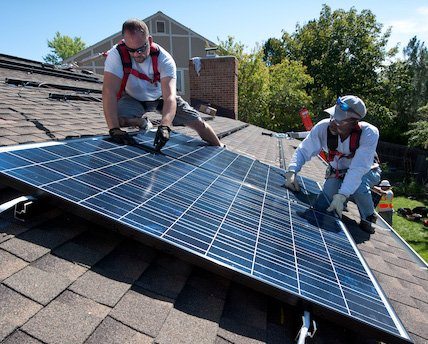

In most cases, investing in a domestic solar PV system or in energy savings measures has become a positive financial investment. The question is: how good is the investment?
Many articles describe the financial benefits of a solar PV system by using the term “payback”.
Payback in this context is just a shortcut for payback time or payback period. It describes how many years it will take until the initial outlay has been paid back or in technical terms how long it takes until the break-even point of the investment has been reached.
Some solar installers, consultants and website articles even call the payback time ‘return on investment’ or in short, ROI. This is wrong. In financial textbooks it can be found that ROI used in finance calculations produces results in terms of %, not years. (https://en.wikipedia.org/wiki/Return_on_investment )
While ‘payback time’ appears to be a simple description of the financial situation, it comes with a number of disadvantages.
Uncomparable
The main problem is that using payback time as an investment guideline results in a disadvantage to the growth of renewable energy. It makes investments in renewable energy or energy savings measures impossible to compare to other financial investments.
This is because payback time is not a term used with other investments. Do we discuss investments by saying, “Telstra shares have a payback time of 7 years.” or “The investment bonds I bought will pay back in 4 years.”?
Misleading
Another problem is that while it appears obvious what payback time means, it is actually not that simple, and the interpretation of payback time is prone to mistakes and misconceptions. For instance, one could think, that a payback time of say 10 years is a bad thing. But is that really so? We will get to that a bit later.
Demotivating
While it sounds nice that putting say $5000 in a 5kW solar system and average electricity cost savings of 15 cent/kWh result in a payback time of 5.3 years, it does not say anything about the additional 20 years where the solar system is producing electricity for free with only some repair and maintenance costs (e.g. replacement of inverter) to be paid. Payback time does say nothing about the $22,000 earned over this time period.
Incorrect
Payback time does not take into account the time value of money. $100 today is not the same as getting $100 in 5 years. This not only about inflation but also about the interest the money can generate if we have it today.
Use comparison rate instead
Would it not be better if we could compare solar PV with any other investment?
This can be done by using what is defined as the ‘comparison rate’. The comparison rate is a term defined for home loans by the Australian Government and must be provided with all domestic home loan products.
However, the calculation works both ways. In case of solar PV the owner is the ‘bank’ and will receive his ‘payments’ either from savings on grid demand or from an existing feed-in tariff or from a combination of both.
The comparison rate is calculated in the same way as the ‘Internal Rate of Return’ (IRR), which is used in financial mathematics. IRR is a function that is very difficult to calculate manually. However, it is easy to use on a computer because it is available as a financial function with most spreadsheet programs.
The Internal rate of Return (IRR) can also be explained in simple terms: The comparison rate is the interest rate of a bank account which creates the same income over the life time of the project as the solar PV system.
Will I also get my money back?
The short answer is yes. If the IRR is positive, the paying back of the initial outlay is included. So if the IRR is 10% you will get the equivalent of 10% interest rate AND you will get your money back – not in a lump sum at the end but in a higher annual return than the 10%.
Relationship of Payback time and comparison rate
However, investment in solar technology can be seen like any other financial investment. The payback time can be converted into a comparison rate. The simple table below shows the conversion of the payback time into the comparison rate for a project with a life time of 10, 20 and 25 years.
It must be said that the table only assumes an initial outlay and a constant annual income, and it does not take into regard extra expenses like replacing a defective inverter. This will make the real world data for the IRR a little bit lower. For a precise calculation it is necessary to set up a detailed spreadsheet or to use a special calculator program.

In the initial example a payback time of 10 years was mentioned. This may sound pretty poor. However the comparison rate (or IRR) over the life time of a solar PV system is still 8.78%.
This means the solar investment with an IRR of 8.8% for a project of 25 years life time is as good as $5000 invested in a savings account over 25 years with an interest rate of 8.8% (and the money back). That’s pretty good! The best savings accounts available today are providing far less than half of this interest rate.
Using the comparison rate for investments in solar PV and generally in any kind of energy savings will make these investments fully comparable to any other investment and reveal the full financial potential of these measures.
Calculators and more details can be found at http://www.sun2steam.com.au/index.php/calculators/
Jo Muller is ecretary of the Central Coast Community Energy Association Inc.


